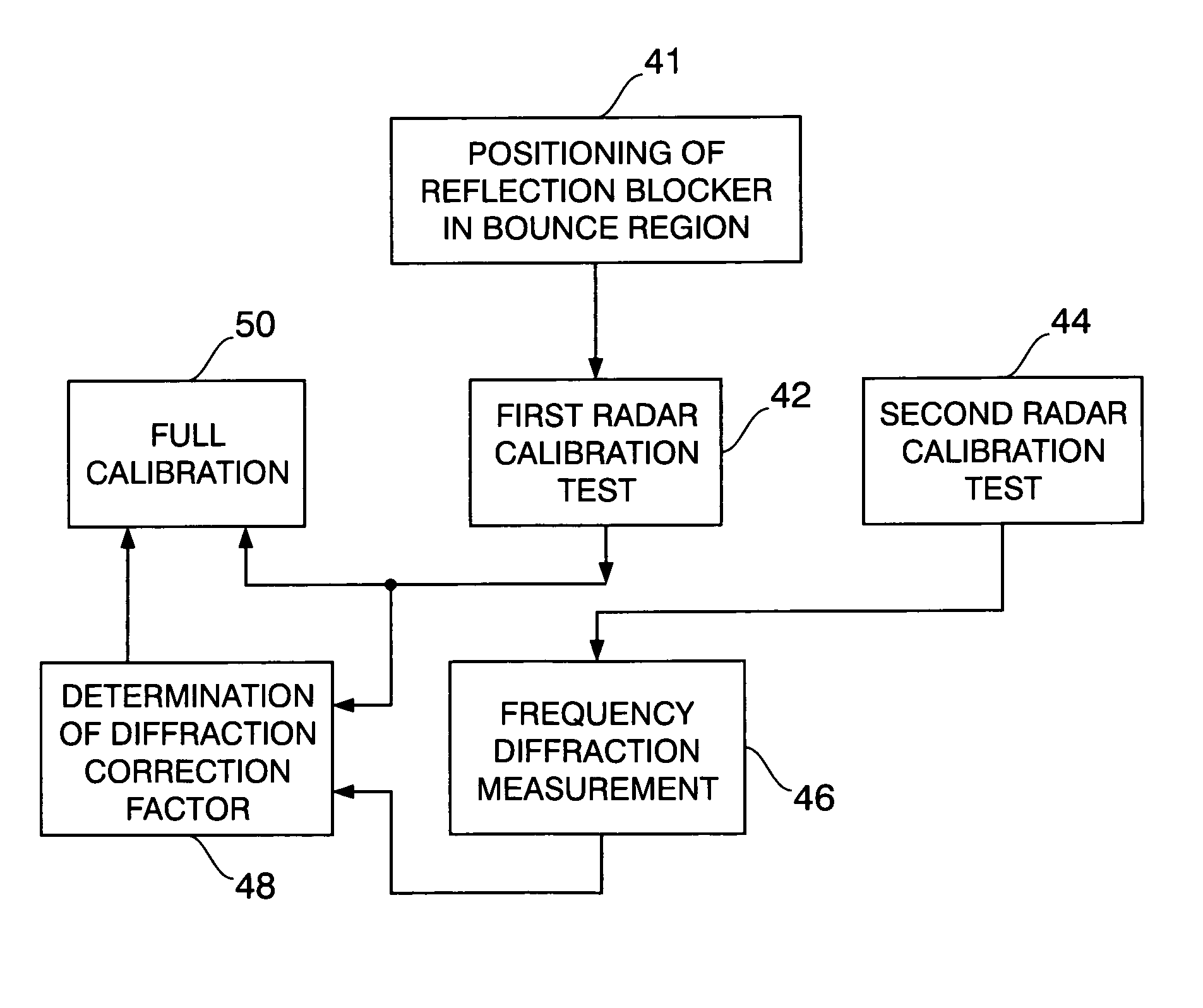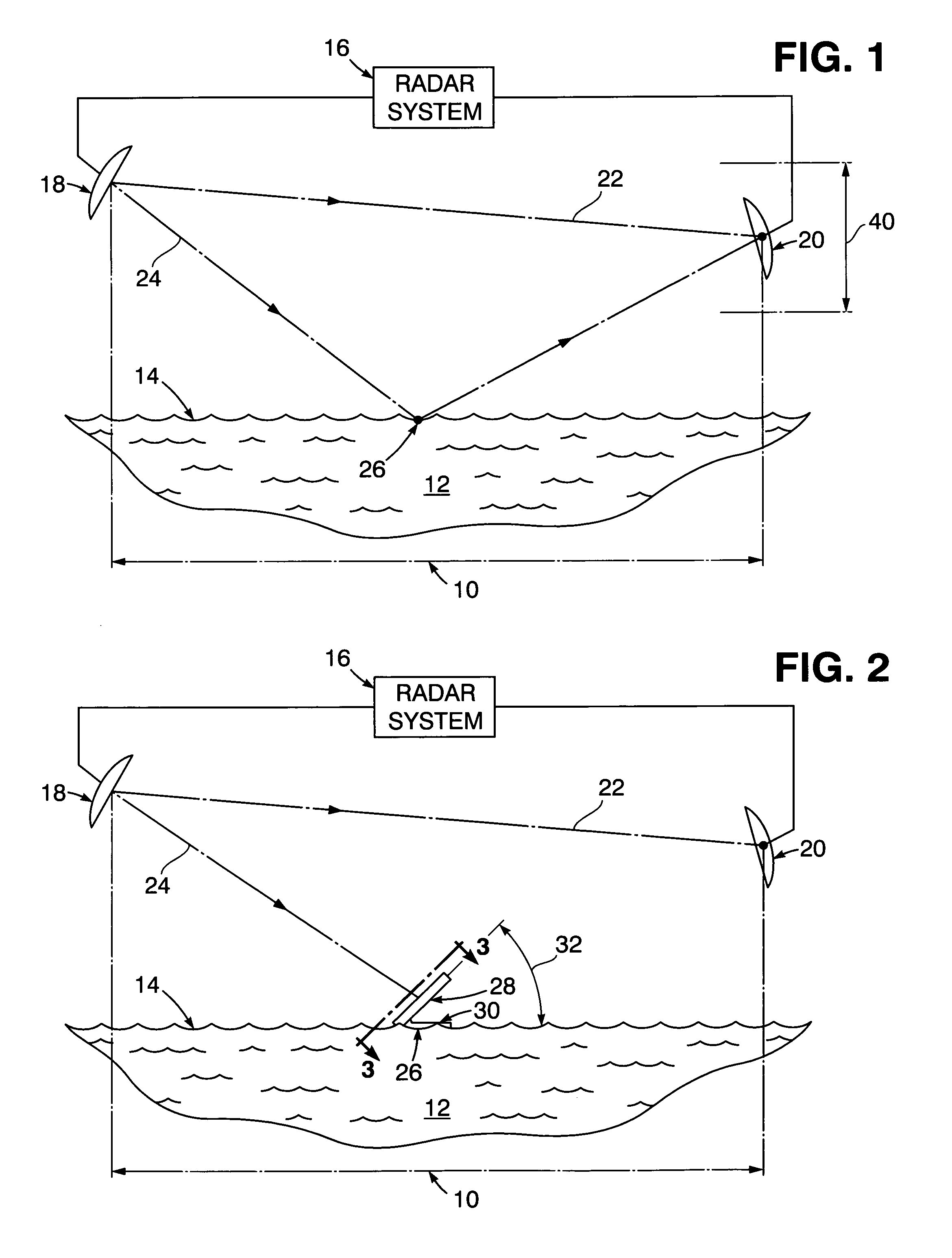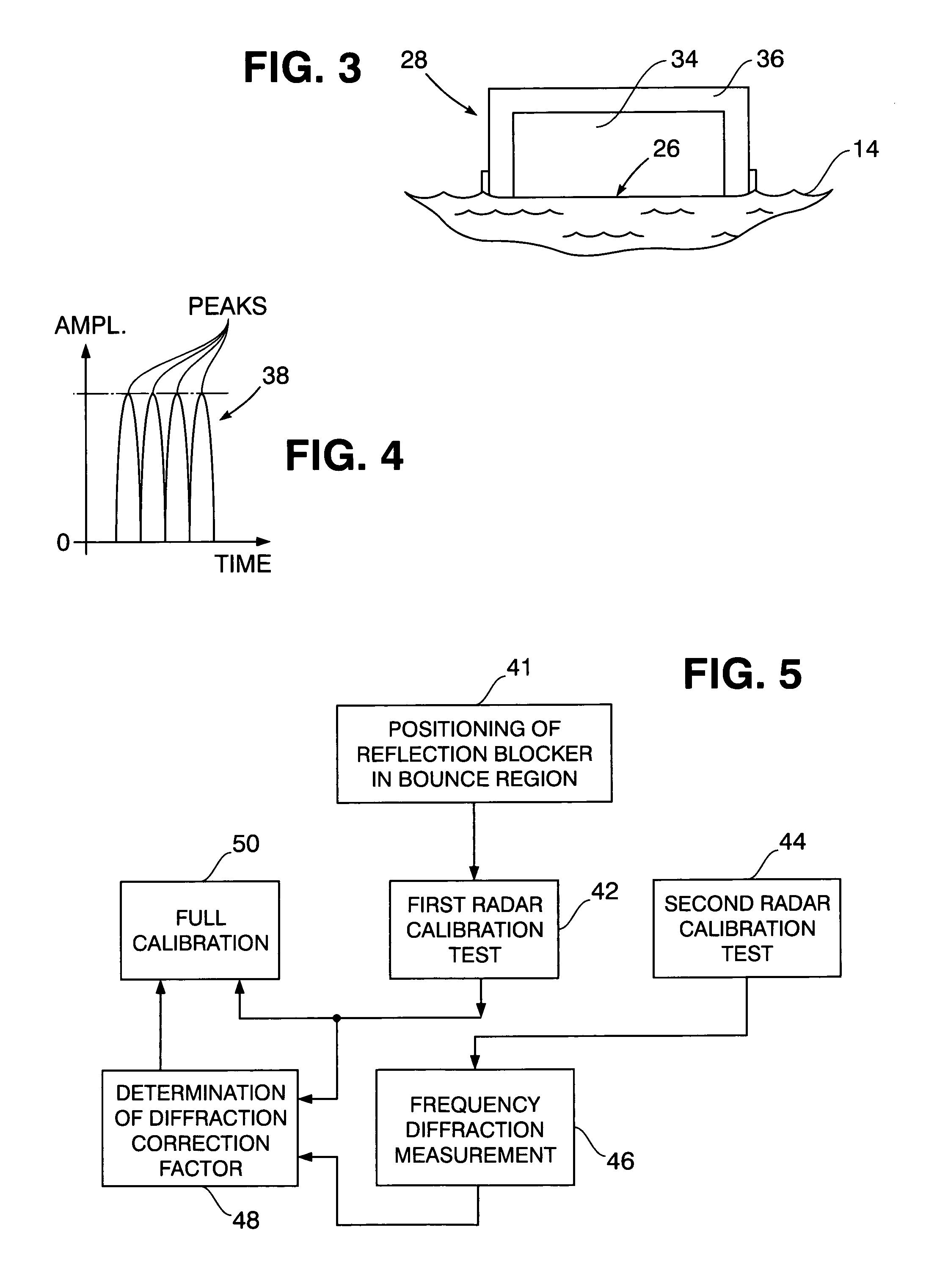In-situ calibration of radar frequency measurement
a radar frequency and in-situ calibration technology, applied in the field of in-situ calibration of radar frequency measurement, can solve the problem that the calibration of the measurement is however difficult to perform
- Summary
- Abstract
- Description
- Claims
- Application Information
AI Technical Summary
Benefits of technology
Problems solved by technology
Method used
Image
Examples
Embodiment Construction
[0011]Referring now to the drawing in detail, FIG. 1 illustrates a target region 10 on top of a body of seawater 12 on which a targeted surface 14 is positioned underlying a bi-static type of radar system 16 located above the targeted surface 14 on some support structure such as a bridge. A radar transmitter 18 and a receiver 20 are associated with the system 16, are located in spaced relation to each other so as to establish the target region 10 therebetween on the seawater surface 14. The transmitter 18 and receiver 20 are furthermore angularly positioned so that during a first initial radiation frequency measurement test, radiation energy is forwardly emitted from the transmitter 18 along a direct path 22 to the receiver 20 and along a radiation scattering path 24 to a radar bounce reflection point 26 on the targeted surface 14 within the region 10.
[0012]Pursuant to the present invention, as shown in FIG. 2 a radar radiation blocker 28 is positioned by a float support 30 on the t...
PUM
 Login to View More
Login to View More Abstract
Description
Claims
Application Information
 Login to View More
Login to View More - R&D
- Intellectual Property
- Life Sciences
- Materials
- Tech Scout
- Unparalleled Data Quality
- Higher Quality Content
- 60% Fewer Hallucinations
Browse by: Latest US Patents, China's latest patents, Technical Efficacy Thesaurus, Application Domain, Technology Topic, Popular Technical Reports.
© 2025 PatSnap. All rights reserved.Legal|Privacy policy|Modern Slavery Act Transparency Statement|Sitemap|About US| Contact US: help@patsnap.com



